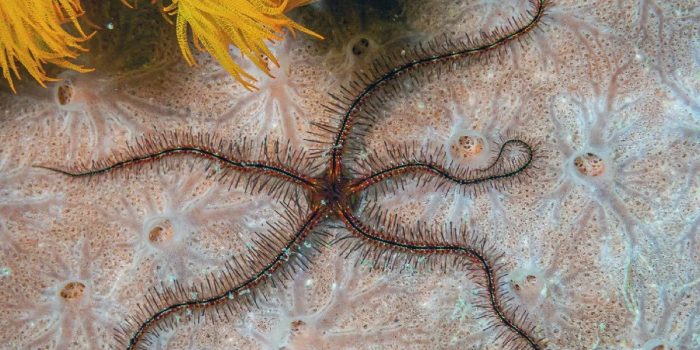Researchers have discovered that brittle stars, a type of echinoderm, exhibit a form of learning called classical conditioning. Unlike animals with centralized brains, brittle stars lack a central nervous system and instead possess decentralized nerve cords. According to a researcher, each nerve cord can function independently, forming a system akin to a committee rather than a hierarchical structure.
“There’s no processing center,” said lead author Julia Notar, who spearheaded the new work as part of her biology Ph.D. in professor Sönke Johnsen’s lab at Duke University.

Classical conditioning, a learning process identified by Russian physiologist Ivan Pavlov, involves associating a neutral stimulus with an unconditioned stimulus to produce a conditioned response. Over the years, classical conditioning has played a significant role in understanding behavioral psychology, illustrating how associations between stimuli and responses develop through experience.
“Each of the nerve cords can act independently,” she added. “It’s like instead of a boss, there’s a committee.”
While some prior experiments on starfish indicated the applicability of classical conditioning principles, brittle stars, sea urchins, and sea cucumbers, which belong to the echinoderm family, had not been extensively studied. To fill this gap, researchers conducted a 10-month study involving 16 black brittle stars. Half of the brittle stars were trained to associate dimmed lights with feeding, while the other half were fed only in well-lit conditions.
The trained brittle stars exhibited a learned response by associating the absence of light with meals. Initially, when the lights dimmed, all the animals remained hidden. However, over time, the trained group began emerging from hiding whenever the lights went off, even before food was provided. This behavior suggests that these brainless creatures could anticipate and respond to environmental cues, indicating a level of learning beyond simple instinctual scavenging.

The study challenges the perception of these creatures as mere automated scavengers and highlights their potential ability to anticipate predators and food availability through learned behaviors.
“Knowing that brittle stars can learn means they’re not just robotic scavengers like little Roombas cleaning up the ocean floor,” Notar said. “They’re potentially able to expect and avoid predators or anticipate food because they’re learning about their environment.”
The research aims to uncover the mechanisms behind how these brainless animals learn and recall information using a neurological system distinct from centralized brains found in other species, raising intriguing questions about the nature of intelligence in different forms of life.


